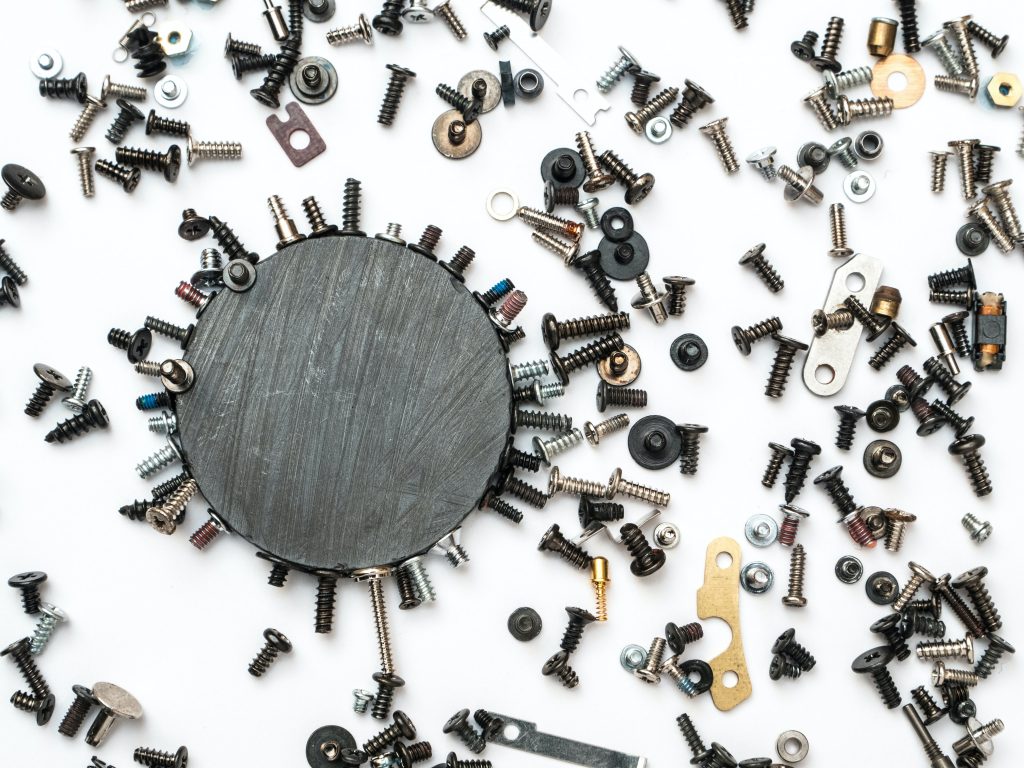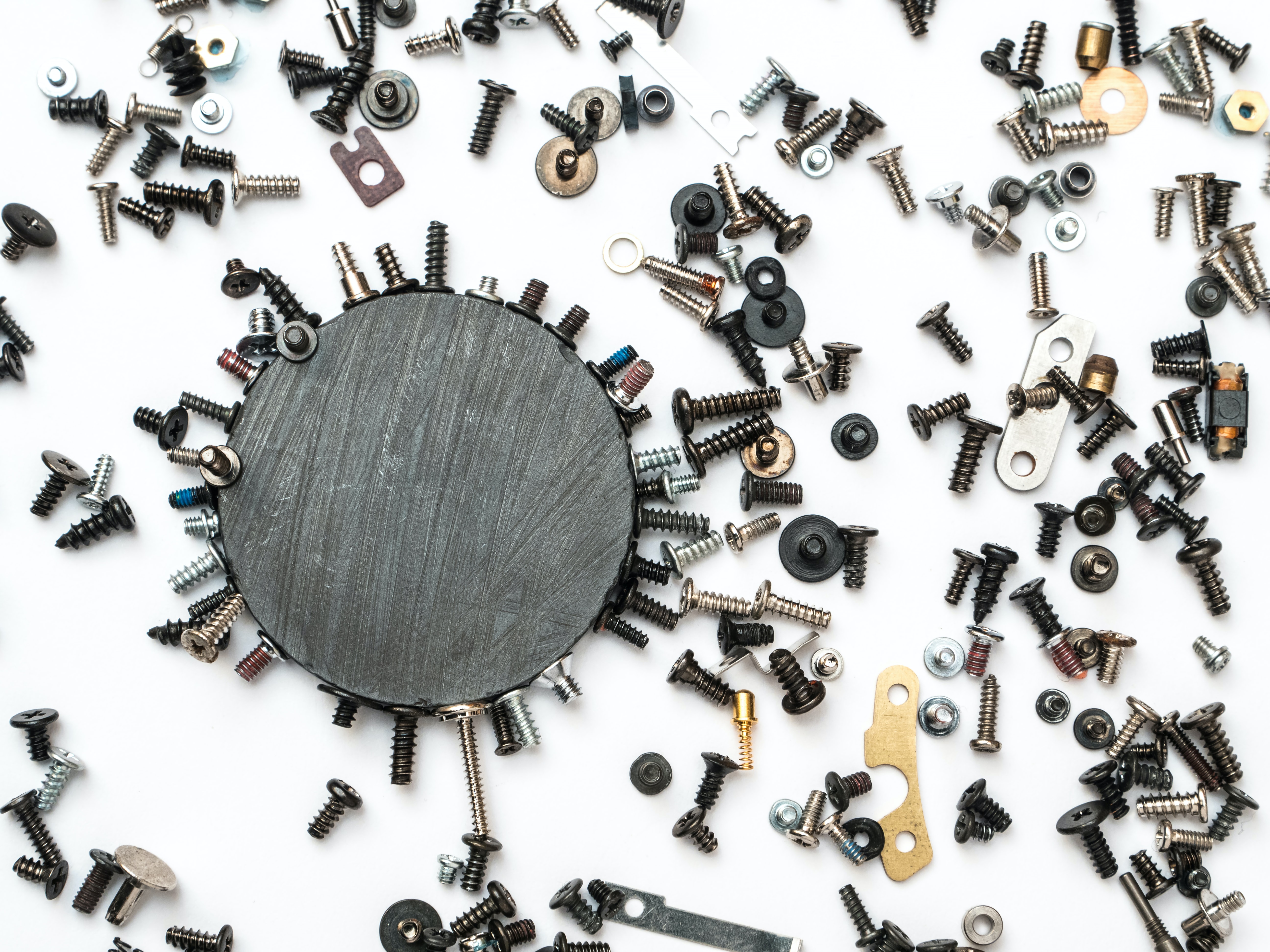
A magnet is an object or material that produces a magnetic field, a force which can attract some objects or materials and repel others. Magnets are used in a lot of important everyday engineering that we might not even notice; they’re in computers, headphones, credit cards, even life-saving medical equipment. But perhaps the more visible and obvious uses for magnets are those that involve the very simple attraction of magnet to metal (or metal to magnet). Pinning shopping lists to fridge doors, closing clasps on bags, sticking memos to magnetic boards; everyone is familiar with the powerful click that occurs when magnet and metal meet. Metal is the only material that can attract magnets, but does this mean that all metals are magnetic? Definitely not. So, which metals are magnetic and which are not? Read on to find out…
The Main Magnetic Metals
There are three main naturally-occurring and well-known magnetic metals, also known as ferromagnetic materials. They are:
Iron
Cobalt
Nickel
The rare earth metals dysprosium and gadolinium are also magnetic materials.
Can Alloys of Iron, Cobalt and Nickel be Magnetic?
An alloy is a metal made by a combination of elements, so it makes sense that if an alloy contains any of the magnetic metals nickel, iron or cobalt, it will have magnetic properties. In most cases, alloys of these metals will possess magnetic qualities, although this can be affected by the ratio of magnetic to non-magnetic ingredients. Put simply, the lower the quantities of magnetic elements in an alloy, the weaker the magnetic attraction. Overall, materials made with lower levels of these key elements can only be temporarily magnetised and generally have a much weaker magnetic field.
Which Metal is the Most Magnetic?
The most magnetic of all the magnetic metals is iron.
Is All Steel Magnetic?
Steel is an alloy of iron and carbon, with the carbon added to improve overall strength. Typically, however, carbon only makes up less than 10% of the total of the total finished product, meaning the vast majority of steel is made from highly-magnetic iron. As you’d expect, then, most steel is magnetic, but you may be surprised to learn that not all of it is. In fact, one type of steel that you’re likely to come into contact with on a day-to-day basis is not always magnetic, and that’s stainless steel.
Why is Not All Stainless Steel Magnetic?
Stainless steel is made with at least 10.5% chromium, to make it tough against corrosion and surface marks. Where stainless steel contains a relatively low ratio of chromium, it is known as martensitic, and is still magnetic. That’s because its microstructure remains ferritic. In a ferritic structure, all the atoms are facing in the same direction and working together. If the structure is disrupted, the atoms become jumbled and less aligned. In many commonly-used stainless steels, a higher rate of chromium is added to the mix, and often nickel is brought in as well, both to make the metal easier to work with and weld. Although nickel itself is magnetic, this combination of elements changes the microstructure of the finished alloy and it becomes what’s known as austenitic. Interestingly, when non-magnetic stainless steel is pressed or stretched at low temperatures (i.e. cold-formed), it can become magnetic because the process can realign those atoms, neatening them up again and making the structure ferritic. That’s why some kitchen sinks can have a very weak magnetic force around the parts where they’ve been moulded, but none at all on the flat surfaces. The 316 and 304 stainless steel that we sell is austenitic and therefore will not attract magnets.
Which Steels are Magnetic?
Other than austenitic stainless steels, most steel does attract magnets. Galvanised steel, Corten steel, mild steel, cold-reduced steel and hot-rolled steel are all magnetic.
Which Metals are Not Magnetic?
Given the fact that just four naturally-occurring metals are magnetic, there are many more that are not. Metals that magnets won’t stick to include copper, (and alloys of copper like bronze and brass), aluminium, lead, tin, zinc and titanium. And while precious metals like gold and silver might be very attractive to human beings, they never attract magnets.

